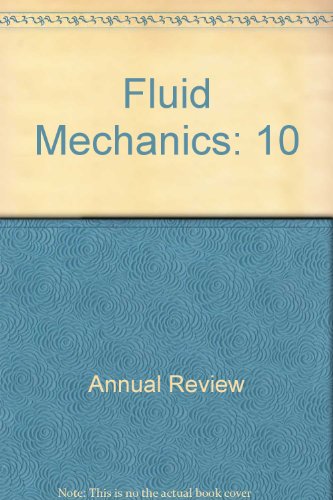Dynamics of Three-Dimensional Shock-Wave/Boundary-Layer Interactions
IF 30.2
1区 工程技术
Q1 MECHANICS
引用次数: 13
Abstract
Advances in measuring and understanding separated, nominally two-dimensional (2D) shock-wave/turbulent-boundary-layer interactions (STBLI) have triggered recent campaigns focused on three-dimensional (3D) STBLI, which display far greater configuration diversity. Nonetheless, unifying properties emerge for semi-infinite interactions, taking the form of conical asymptotic behavior where shock-generator specifics become insignificant. The contrast between 2D and 3D separation is substantial; the skewed vortical structure of 3D STBLI reflects the essentially 2D influence of the boundary layer on the 3D character of the swept shock. As with 2D STBLI, conical interactions engender prominent spectral content below that of the turbulent boundary layer. However, the uniform separation length scale, which is crucial to normalizing the lowest-frequency dynamics in 2D STBLI, is absent. Comparatively, the spectra of 3D STBLI are more representative of the mid-frequency, convective, shear-layer dynamics in 2D, while phenomena associated with 2D separation-shock breathing are muted. Asymptotic behavior breaks down in many regions important to 3D-STBLI dynamics, occurring in a configuration-dependent manner. Aspects of inceptive regions near shock generators and symmetry planes are reviewed. Focused efforts toward 3D modal and nonmodal analyses, moving-shock/boundary-layer interactions, fluid/structure interactions, and flow control are suggested as directions for future work. Expected final online publication date for the Annual Review of Fluid Mechanics, Volume 55 is January 2023. Please see http://www.annualreviews.org/page/journal/pubdates for revised estimates.三维冲击波/边界层相互作用动力学
测量和理解分离的,名义上的二维(2D)冲击波/湍流边界层相互作用(STBLI)的进展引发了最近的运动,重点是三维(3D) STBLI,它显示出更大的配置多样性。尽管如此,统一的性质出现了半无限相互作用,采取圆锥渐近行为的形式,其中激波发生器的特性变得无关紧要。2D和3D分离之间的对比是实质性的;三维STBLI的倾斜涡结构本质上反映了边界层对扫掠激波三维特性的二维影响。与二维STBLI一样,锥形相互作用在湍流边界层之下产生了显著的光谱含量。然而,对于二维STBLI中最低频率动态归一化至关重要的均匀分离长度尺度却不存在。相比之下,三维STBLI的光谱更能代表二维的中频、对流、剪切层动力学,而与二维分离-激波呼吸相关的现象则较为微弱。渐近行为在许多对3D-STBLI动力学重要的区域破裂,以构型依赖的方式发生。对激波发生器和对称面附近的初始区域进行了评述。将重点放在三维模态和非模态分析、运动激波/边界层相互作用、流体/结构相互作用以及流动控制方面,建议作为未来工作的方向。预计流体力学年度评论第55卷的最终在线出版日期为2023年1月。修订后的估计数请参阅http://www.annualreviews.org/page/journal/pubdates。
本文章由计算机程序翻译,如有差异,请以英文原文为准。
求助全文
约1分钟内获得全文
求助全文
来源期刊
CiteScore
54.00
自引率
0.40%
发文量
43
期刊介绍:
The Annual Review of Fluid Mechanics is a longstanding publication dating back to 1969 that explores noteworthy advancements in the field of fluid mechanics. Its comprehensive coverage includes various topics such as the historical and foundational aspects of fluid mechanics, non-newtonian fluids and rheology, both incompressible and compressible fluids, plasma flow, flow stability, multi-phase flows, heat and species transport, fluid flow control, combustion, turbulence, shock waves, and explosions.
Recently, an important development has occurred for this journal. It has transitioned from a gated access model to an open access platform through Annual Reviews' innovative Subscribe to Open program. Consequently, all articles published in the current volume are now freely accessible to the public under a Creative Commons Attribution (CC BY) license.
This new approach not only ensures broader dissemination of research in fluid mechanics but also fosters a more inclusive and collaborative scientific community.

 求助内容:
求助内容: 应助结果提醒方式:
应助结果提醒方式:


